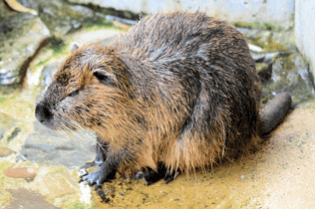 Did you know that the beaver population is making a significant comeback? Fur traders had previously diminished a huge number of these creatures, but now there are around six to twelve million beavers in the US alone.
Did you know that the beaver population is making a significant comeback? Fur traders had previously diminished a huge number of these creatures, but now there are around six to twelve million beavers in the US alone.
This can prove to be extremely beneficial for certain parts of our environment; however, it could also be detrimental to our land and property. Humans and beavers can sometimes be at odds over who should occupy a certain space. It is just another one of nature’s conflicts that can be difficult to solve.
Beaver dams
Beaver dams can be a big problem for property owners. Beavers can block waterways and ruin trees just by building their dams. It may take a while to notice a beaver dam, but I am sure once a good rainstorm comes along you will take heed.
Their dams can end up blocking drainage pipes, rivers and streams, which may leave you standing in a few feet of water or worse a flooded yard or house. Beavers will also destroy trees on your property in order to build their dams. Hopefully, you will quickly be able to identify and successfully remove any invading beavers before they do too much harm to your property.
Diseases
As with most wild animals, there are a few diseases that are spread by coming in contact with beavers.
Tularemia is also known as rabbit fever. You can become infected through direct contact with your skin and the blood or tissues of an infected beaver. This disease does not require a cut or scrape in the skin to infect you, as it is known to penetrate perfectly intact skin.
You can also pick up Francisella tularensis, the bacteria that causes this disease from drinking contaminated pond water. Symptoms can include chills, fever, headaches, vomiting, aches and pains, skin lesions, and swollen glands. It is best interest to wear gloves when working around a beaver or their dams to reduce the risk of catching this disease.
Blastomycosis is a fungal disease that attacks your lungs. You can become infected by breathing in spores located in forest soils. There have been a few isolated cases of blastomycosis, not many, that have been linked to beaver dams.
If you happen to be tearing apart a beaver dam on a particularly dry day where there is a lot of dust being blown around, you could be exposed to some blastomycosis spores. The main symptom to watch out for is a pneumonia-like persistent cough.
Giardiasis is an intestinal illness that is known to cause chronic diarrhea. People can become infected by eating or drinking food or water that has been contaminated by the feces of any type of large mammal such as a beaver.
This contamination likely occurs in the waters where a beaver dam is present because of the high number of animals there and the unmoving or slow moving waters. You can avoid this disease by only drinking sterilized water and avoiding any water or food near a beaver or its dam.
It can be a huge task trying to rid yourself of a beaver infestation. You may think that if you kill the beaver or destroy their dam, then you can easily be rid of these animals. However, that is not the case.
If the environment is conducive for a beaver to thrive, then others will most likely take its place, and you may end up having to go through the same process over and over.
Your best option would be to call in the professionals, who are trained in removing beavers for good.